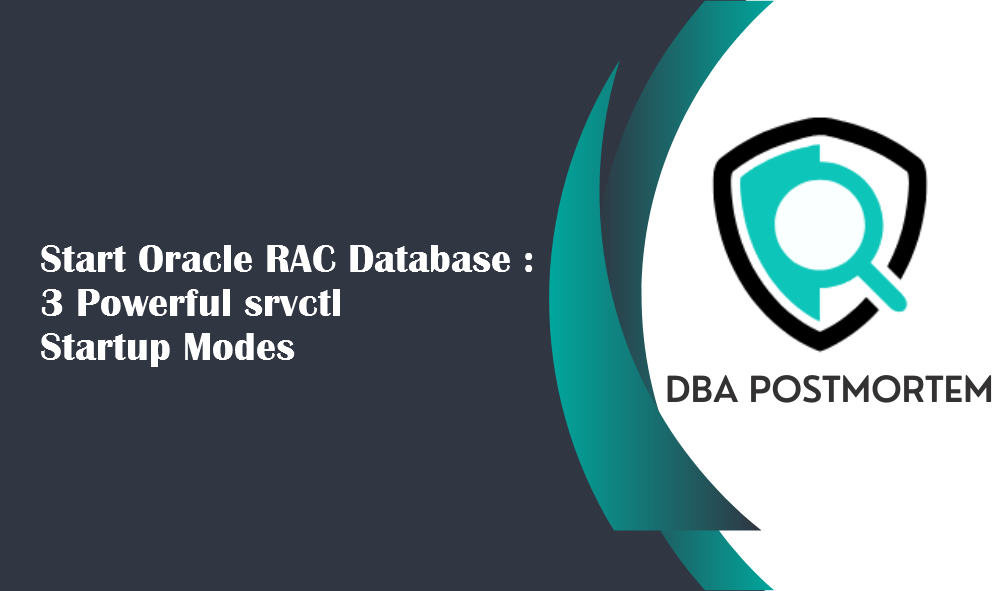
Start Oracle RAC Database operations should be done using Oracle’s srvctl utility to ensure consistent, cluster-aware startup procedures across all nodes.
This guide will show you how to start your Oracle RAC database using the srvctl utility, including all available startup modes like nomount, mount, and open.
Table of Contents
What Is srvctl?
srvctl is a command-line tool used to manage Oracle RAC components like databases, instances, listeners, and services. It helps ensure that operations like starting or stopping the database happen smoothly and supports high availability across the cluster.
Syntax to Start Oracle RAC Database
Use the following syntax to start an RAC database:
srvctl start database -d <db_name> [-o <start_option>]-d <db_name>: Name of the database (e.g.,PRODB)-o <start_option>: It is an optional parameter. Default isopen
Startup Options
Oracle allows three distinct startup phases for RAC databases:
| Option | Description |
|---|---|
nomount | Starts the instance and mounts the database but does not open it |
| mount | Starts the instance and mounts the database, but does not open it |
| open | Fully starts and opens the database for user access (default) |
Each option is helpful based on what you need to do, like recovering the database, configuring Data Guard, or allowing users to access the database.
srvctl Command Example
Here are working examples of how to start an RAC database in different modes:
#Start database in NOMOUNT mode (used for recovery/control file creation)
srvctl start database -d PRODB -o nomount
#Start database in MOUNT mode (commonly used when working with Data Guard setups))
srvctl start database -d PRODB -o mount
#Start database in OPEN mode (default mode for normal operations)
srvctl start database -d PRODB -o openYou can also just run the command below to start the database completely:
srvctl start database -d PRODBBy default, this starts the database in open mode when you do not mention the specific option.
RAC Startup Best Practices
- Always check the status after starting the database using the below command:
srvctl status database -d PRODB- Use nomount or mount mode only when needed, like during backups with RMAN, setting up Data Guard, or performing recovery tasks.
- Run the command using the Grid Infrastructure user account, such as
gridororacle. - Make sure that your environment settings and Oracle Home path are properly set for the RAC environment.
To learn more about RAC startup options and Oracle’s cluster tools, explore the resources below: Oracle Documentation – srvctl Reference
How to Stop Oracle Database Using srvctl – Check out our internal guide on how to safely stop databases using srvctl.